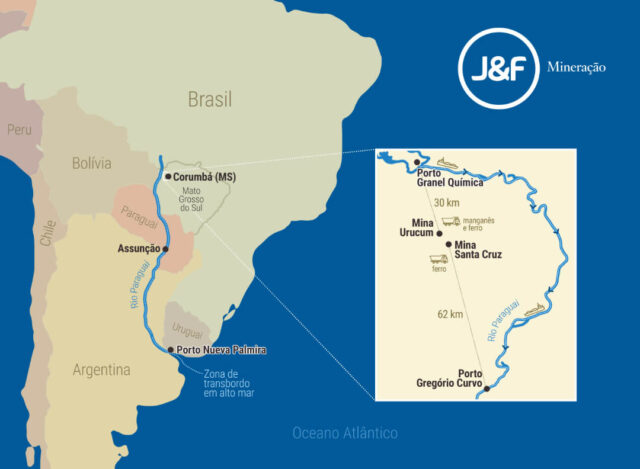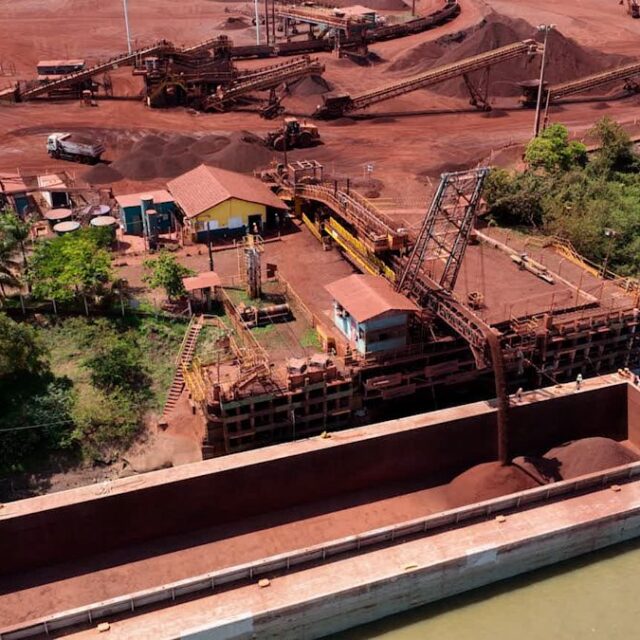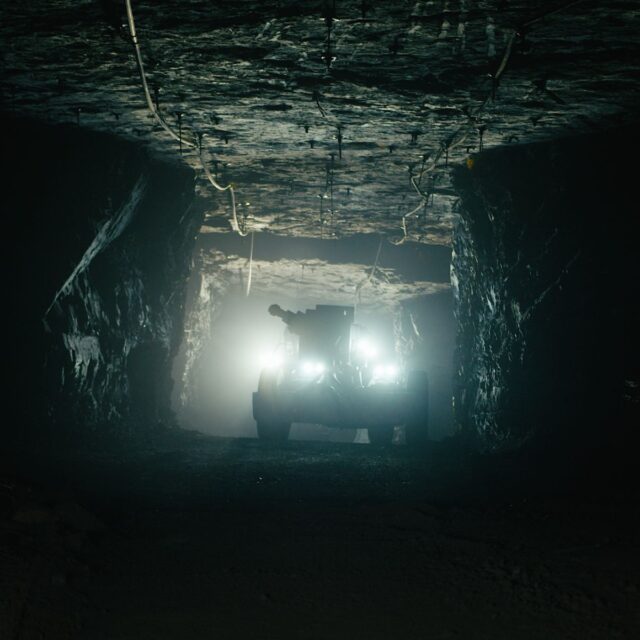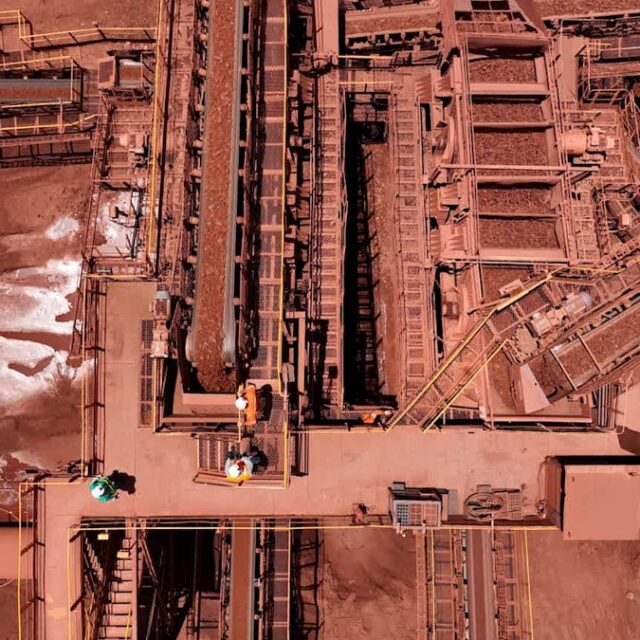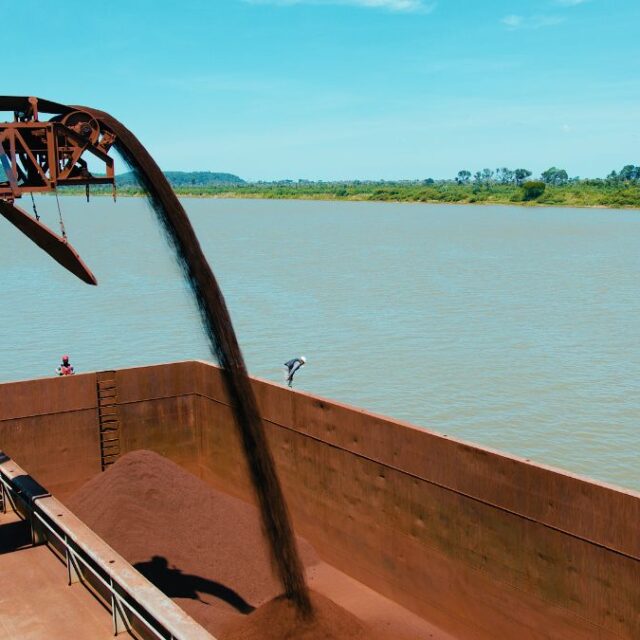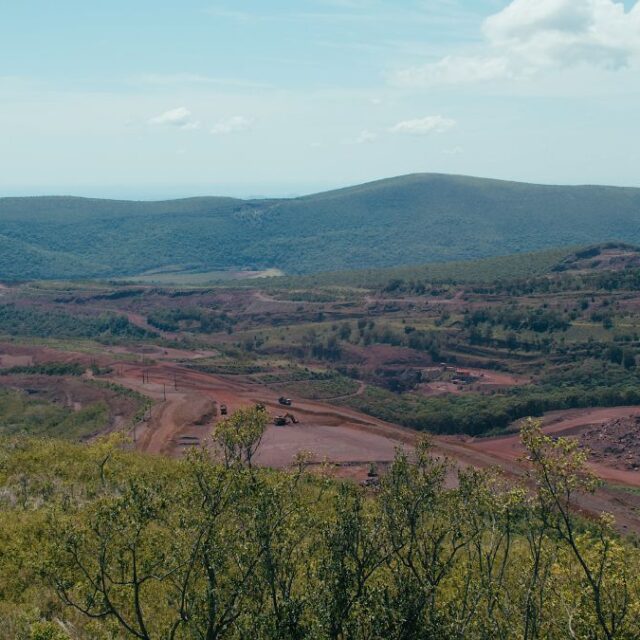Operations | Logistic System | Photo Gallery
Operations
J&F Mineração joins the industry with a compact structure yet with the capacity to invest in expanding its production as a result of its extensive reserves of high-grade iron ore. Its objective is to become a unique and reliable solution for the green steel production chain, contributing to the reduction in greenhouse gas emissions.
In 2022, J&F Mineração was conceived through the acquisition of MCR (Mineração Corumbaense Reunida) located in Corumbá, State of Mato Grosso do Sul (MS). The iron and manganese ore derive from two high-grade mines in the region of Corumbá.
The company’s integrated logistics system includes a river logistics company and its own port terminal, in addition to a partner port in the region of Corumbá, a port terminal in Nueva Palmira, Uruguay and road terminals for the domestic market.
Mines
Santa Cruz Mine
The Santa Cruz mine has an open pit of high-grade iron ore and has been operating since 1974. Its main product is high-grade lump iron ore, a unique product on the market. Furthermore, the Santa Cruz mine produces natural fines (sinter feed) with a grade above market average and granulometry that allows high productivity for the production of sinter.
Urucum Mine
The Urucum mine has been in operation since 1903 It has an open pit iron ore and an underground manganese ore mine, which is the one and only in Brazil. In addition to iron ore lumps and fines with a quality similar to that of the Santa Cruz mine, Urucum also produces excellent quality manganese lumps for the production of ferroalloys.
Integrated Logistics System
River Ports
The ore is shipped by road or railway towards two river ports on the Paraguay River: Porto Gregório Curvo, owned by J&F Mineração and the partner port Granel Química.
River Navigation
MCR’s production follows the waterway of the Paraguay and Paraná rivers towards the sea either on barges from Transbarge Navegación (TBN), fully owned river navigation company based in Asunción, or on partner vessels.
Port Terminal
After 2,500 kilometers of waterway, the barges arrive at the port terminal in Nueva Palmira, Uruguay. This is the location where Handymax, Panamax and Baby-cape vessels are loaded with quantities of up to 45,000 tons. In Uruguay, transshipment operations are also carried out, in Capesize vessels and are loaded with up to 180,000 tons of iron ore.
Domestic Market
Clients from the Brazilian market are served through the Tupacery and Antônio Maria Coelho road terminals, in the city of Corumbá (MS), in addition to rail transshipment terminals in Suzano located in the State of São Paulo, and Itutinga in the State of Minas Gerais.
Efficient production, towards a sustainable steel production
The goal of J&F Mineração is to become a unique and reliable solution towards a sustainable steel format within the production chain, allowing for a significant reduction in greenhouse gas emissions.
Dry Mining Process
Sustainable operations are environmentally friendly, minimizing impacts and promoting adequate use of available resources. Neste sentido, In this regard, 80% of iron ore production at J&F Mineração is carried out through dry processing.. Dry mining utilizes smaller quantities of water and therefore, does not generate tailings and does not require the construction of dams.
Additionally, due to the unique and intrinsic characteristics of its reserves, there is virtually no loss (generation of sterile mine waste) during mining and production stages.
In essence, all material processed and removed from our mineral reserves will become a final product, resulting in a considerable reduction in environmental impact.
Filtration System
In July 2023, after the setup of a filtration system, J&F Mineração will no longer need to use dam systems, including the 20% production which uses the wet mining processes.
Nevertheless, our aim is to ensure that 100% of the production is carried out through the dry mining process. In this way, the operation will have an even lower environmental impact and offers greater safety to all stakeholders involved and to the environment.
Lump and emission reduction
J&F’s main product is iron ore lumps. Due to its high concentration of iron, it is considered a true ‘natural pellet’ when compared to iron ore pellets (a material artificially produced from iron ore fines, usually through concentration, agglomeration and burning).
J&F’s iron ore lump is an environmentally efficient alternative for reducing greenhouse gas emissions in the production of steel.
Unlike other types of iron sources, such as raw materials used in the steel industry, J&F’s iron ore lumps do not require preparation or processing of high-quality iron raw material for direct use in the processes or production technologies of steel or iron.
In addition to lower environmental impact in the extraction and processing of iron ore in the mine, J&F’s iron ore lumps allows for the reduction of greenhouse gas emissions in steel production through the use of blast furnace and oxygen converter technologies.
The reduction in emissions generated by J&F’s lump is that of 70 kg of CO2 per ton of steel, when replacing iron-ore sinter agglomerate and 60 kg of CO2 per ton of steel when replacing agglomerate iron-ore pellets.
“Natural pellet”
J&F is also developing a new product, the ‘natural pellet’ to be applied in the steel production route, using Direct Reduction and electric furnace technologies.
Currently, this technology uses natural gas to produce primary iron and steel, emitting approximately 40% less CO2 per ton of steel produced, when compared to the blast furnace/oxygen converter route.
The ‘natural pellet’ for J&F’s Direct Reduction route can replace up to 30% of the iron ore pellet, allowing for a greater drop in CO2 emissions per ton produced, or between 6% and 15% in relation to steel production using 100% pellets.
For the coming decades, new technological advancements aim at replacing natural gas with green hydrogen, which will allow for the production of green steel, which is carbon neutral. J&F’s ‘natural pellet’ will be one of the inputs for the production of green steel.
